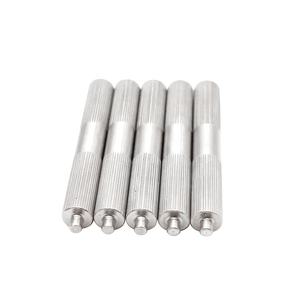Getting rid of a curriculum vitae joint from a drive shaft is an essential job in automobile repair, typically called for when addressing concerns such as torn boots, extreme resonance, or damaged joints. This procedure needs accuracy, appropriate tools, and adherence to safety and security protocols to stay clear of damages to components or injury. Below is a specialist overview describing the steps to safely and successfully eliminate a curriculum vitae joint from a drive shaft.
(how to remove a cv joint from a drive shaft)
Prior to start, ensure the lorry is firmly lifted using a hydraulic jack and sustained on jack stands. Involve the hand brake and place wheel chocks behind the rear wheels to avoid unplanned activity. Collect the required devices: an outlet set, torque wrench, pry bar, round joint separator, hammer, snap ring pliers, safety handwear covers, and eye security. Tidy the work area around the curriculum vitae joint and drive shaft to stop contamination from dust or debris.
Start by getting rid of the wheel corresponding to the curriculum vitae joint being serviced. Make use of a lug wrench to loosen the lug nuts a little before lifting the car, then totally eliminate them when the wheel is off the ground. With the wheel removed, locate the drive shaft and CV joint setting up. The curriculum vitae joint is generally attached to the wheel hub on one end and the transmission or differential on the other.
Next off, get rid of the axle nut securing the CV joint to the wheel center. This nut is typically big (30– 36 mm) and may need a breaker bar or effect wrench for initial helping to loosen due to its high torque requirements. When loosened up, unscrew the axle nut completely and establish it apart. Evaluate the nut for damages; change it if necessary, as reusing a jeopardized nut can bring about failure.
Continue to detach the CV joint from the wheel center. Depending upon the vehicle layout, this may involve separating the reduced control arm or sphere joint to produce adequate clearance. Use a ball joint separator or pickle fork to very carefully separate the steering knuckle from the lower control arm or strut setting up. Exercise caution to stay clear of harming the sphere joint or boot throughout this action. As soon as divided, carefully pull the guiding knuckle external to reveal the CV joint splines placed into the hub.
At this phase, the CV joint may still be maintained by tension or a breeze ring. Make use of a crowbar positioned between the curriculum vitae joint and wheel center to use consistent stress, releasing the joint from the hub. Prevent extreme force, as this can damage the splines or joint housing. If the joint resists elimination, gently tapping the lever with a hammer might help remove it.
With the curriculum vitae joint detached from the hub, concentrate on separating it from the transmission or differential. Situate the circlip or break ring protecting the joint to the result shaft. Use snap ring pliers to compress and remove the keeping clip. Thoroughly pull the drive shaft outward while turning it slightly to launch the curriculum vitae joint from the transmission. If the joint binds, a mild turning activity or light hammer faucets on the drive shaft flange might help in loosening it.
Once the curriculum vitae joint is free, evaluate the drive shaft splines, transmission seal, and joint housing for wear, corrosion, or damage. Clean the splines and surrounding location with a cable brush to eliminate debris. If the CV joint is being changed, move any type of needed elements (e.g., ABS tone rings) from the old joint to the new one prior to installment.
Throughout the process, prevent striking the CV joint straight with a hammer, as this can warp its interior components. Always deal with the drive shaft with like protect against imbalance concerns. Upon reassembly, torque all fasteners to producer specs and make certain the axle nut is correctly bet or protected with a new cotter pin if suitable.
(how to remove a cv joint from a drive shaft)
In recap, eliminating a CV joint from a drive shaft calls for systematic disassembly, appropriate tool usage, and attention to information. By complying with these steps, mechanical designers and technicians can ensure a safe, efficient fixing that preserves the integrity of the automobile’s drivetrain components.


